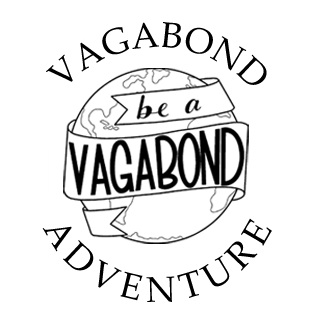Day 510 - Tierra del Fuego, Chile
Day 3 - Land of Fire
Cloudy, misty, the ship is rocking, temperature unknown. We awaken to mist and beyond the waves a single light house on a rockbound shore all white with a single red stripe around its belly. Mountains everywhere, one after another each marching higher white and thick with ice. We are looking at the great ice fields of lower Patagonia.
The peaks are brilliant tossel caps of fresh snow. They tower over tongues of glacial ice that run to the sea. Despite this, there is lots of evidence that the glaciers in Patagonia are retreating. One of the younger crew members mentioned that he used to visit a nice ski resort in Punta Arenas, but no more. The snows are gone, and he's watched the glaciers noticeably recede over the past ten years. Yet during the glacial maximum (more than 10,000 years ago), 600 feet of glacial ice once buried Punta Arenas.
Today we remain mostly aboard the Ventus. Late morning we pass through the Ballenero Channel, named for a whaling ship that was stolen by curious Yagan natives during Robert Fitzroy's first trip to Tierra del Fuego, the one that preceded the voyage of the Beagle and a young scientist named Charles Darwin. In a disastrous recovery of the whaling ship from the natives, Fitzroy commandeered three Yagans: one ten-year-old girl and two young men. They were eventually taken to England where they were "westernized" and paraded before a young Queen Victoria. The queen was quite taken with them, but especially Yokcushlu, the girl, known by her western name, Fuega Basket. But the more famous of the three stolen Yagans was Jemmy Button, who played an ongoing role in England, and with Fitzroy when he returned Jemmy to Tierra del Fuego along with Charles Darwin. But that's another story.
By afternoon we begin to pass through the Beagle Channel and “Glacier Alley.” The alley comprises a series of glaciers that sit along a razor-edged channel, each given different names after the explorers’ countries that first came across them in their voyages from Europe. The variety of nations that found their way to these remote shores gave the glaciers their varied names.
We glided through and I had the strange feeling that I was on something like an especially cool Disney ride. As the ship passed each glacier, the crew scurried out with drinks and food related to each of the countries.
The first Glacier Espana. Cyn and I missed that one, but we suspect red wine was served. Second came Romanci capping a high, snowbound mountain ridge above the channel. Halfway down the cliff the glacier turns into a broad waterfall that thunders into the sea. White wine accompanied this. Next came Germany and beer and sausage. The German glacier is broad with sun blanched peak of gleaming white that runs into a great valley of deep blue ice. Fourth came France. For this we were served sparkling wine with various cheeses; by now feeling no pain. Here a sharp crevasse runs into rugged mountains. Then in quick and increasingly blurry succession: Italy (Prosecco and pizza). Holland, it's glacier with a cleavage between two breasts, white ice topped by thick and abrupt mountains. From there we begin to move out of the northwest arm of the Beagle Channel.
It was a good time with Ventus's denizens milling all around on the top deck, remarking on the landscape, exchanging stories in multiple languages -- Irish lilts, glistening French, German with its long, jawbreaking nomenclatures, rapid-fire Spanish and old fashioned English, Brit or American versions. I’ve come to the conclusion there there are two types of serious traveler. The first wants to make very clear, very quickly how thoroughly they have gotten around the globe. It is important that they clarify all of the amazing sites they have seen. They tend to be pretty certain they have seen more than the people they are talking with, but that can be a serious error because often their travels are lilliputian compared with the others on this ship. The second group comprises intensely curious people that feel no need to explain how well-traveled they are. It's their simple but profound curiosity that has carried them from continent to continent, and all of the cultures they have explored. They spend little time talking about themselves, unless asked. Mostly they ask the questions because they are what I call infovores: people who just want to learn and experience as much as they can like the writers, photographers, missionaries and inveterate pilgrims we met during the voyage; people who like to get around bends, over mountains and beyond horizons. Their knowledge is encyclopedic, and humbling, yet because they are true travelers, they themselves have in turn been humbled which may help explain their essential goodness.
More on them when I complete the book. For now, enjoy the views of Glacier Alley.








